Our Community
Frosty the fine fellow!
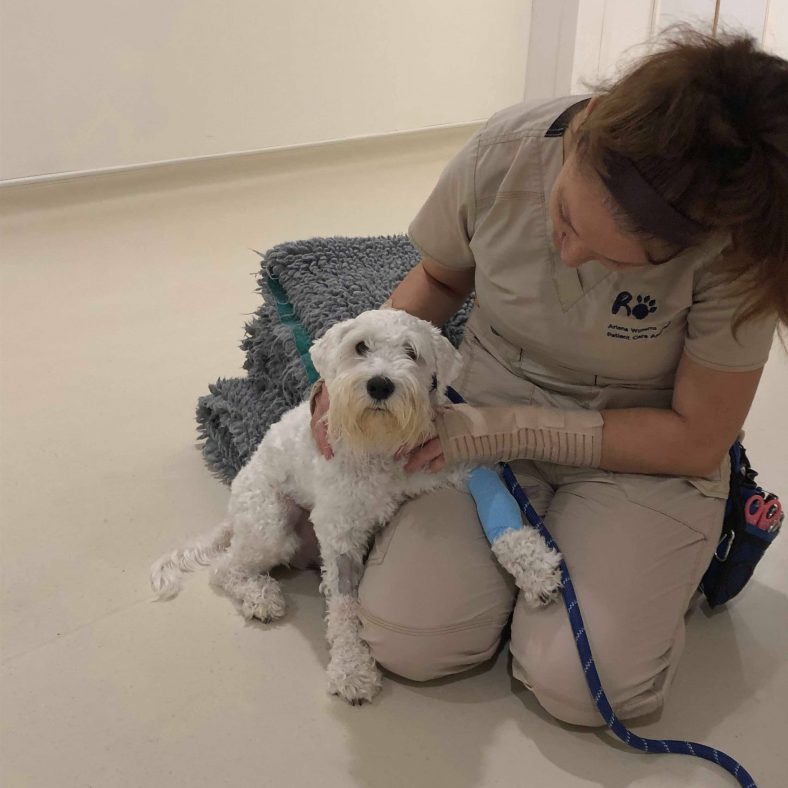
Frosty is a very handsome white Miniature Schnauzer puppy who was referred to our Emergency and Critical Care Department in the early hours of the morning with a sudden onset of painful and frequent urination.
When Frosty came to the hospital he seemed his usual bright and cheerful self. However, when examining his abdomen (tummy) we found a large and painful bladder. Upon closer examination, we could feel what we expected were stones in his urethra (the tube from his bladder which removes urine from the body). It was likely that these stones were blocking Frosty’s urethra, and causing his pain and difficulties urinating. To confirm our suspicions, Frosty was anaesthetised and X-rays of his bladder and urethra were taken. The X-rays showed a number of stones located in Frosty’s urethra and bladder.
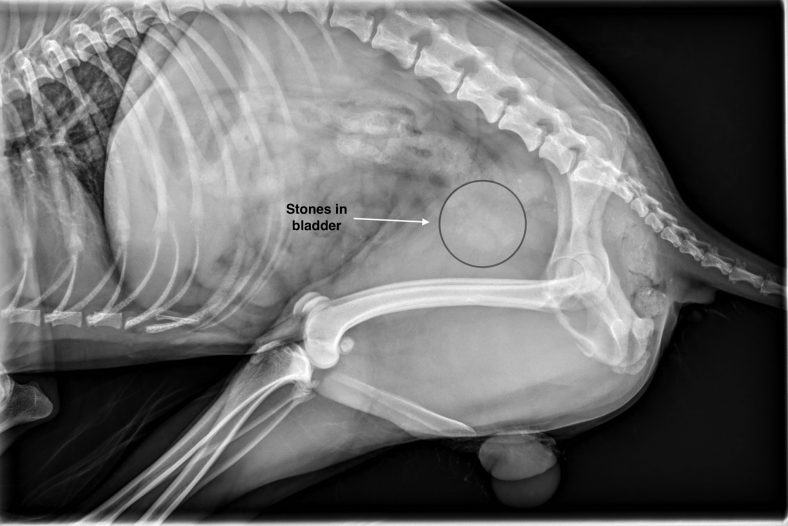
X-ray showing stones in Frosty’s bladder
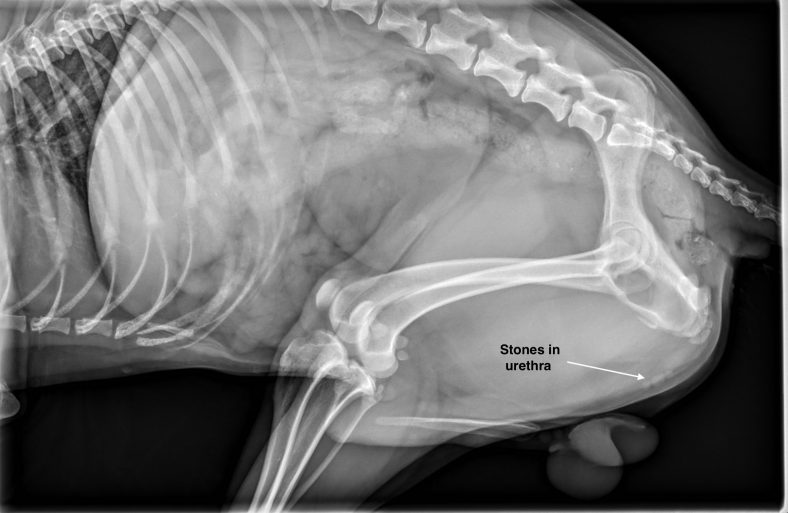
X-ray showing stones in Frosty’s urethra
Whilst Frosty was under anaesthetic we placed a urinary catheter to flush the stones from his urethra back into the bladder and performed surgery to remove the stones from the bladder. This is a much less risky operation than directly removing the stones from the urethra. A sample of urine and the stones were sent for analysis. Frosty recovered overnight and was discharged home the next day.
Bladder stones can form in puppies as a result of disturbed liver metabolism which is caused by an abnormality in the blood supply to the liver (called a portosystemic shunt). With this condition, a blood vessel anomaly causes blood from the abdominal organs to bypass the liver, and go directly to the systemic (general) circulation. This means the liver does not function normally and therefore is unable to metabolise certain products leading to the formation of urinary stones. Other possible clinical signs in cases of a portosystemic shunt include neurological signs (dullness, aimless wandering, fits), vomiting and diarrhoea. Although there were no other clinical signs present at this stage, we could not rule out a portosystemic shunt as a cause for Frosty’s bladder stones.
Frosty greeted us with a wagging tail as we re-examined him a week later. His carer reported no concerns since the operation, and a physical examination showed the surgical wounds had healed well. We had the results back from the analysis of the bladder stones, and these showed a concentration of uric acid (ammonium) which is indicative of a portosystemic shunt. Frosty was therefore booked in for an abdominal ultrasound. Our Diagnostic Imaging team performed the ultrasound as planned, however, the results were inconclusive. Therefore a CT scan was performed and the images confirmed the presence of a portosystemic shunt.
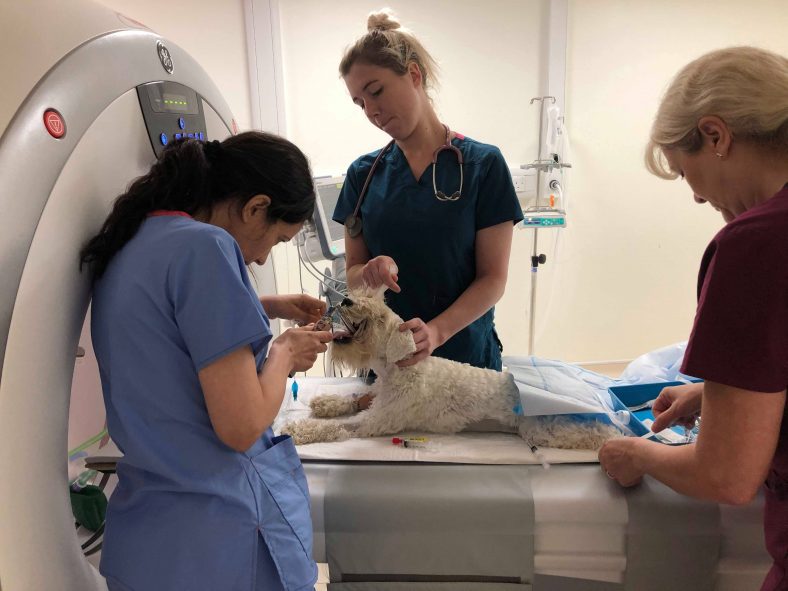
Our Anaesthesia and Diagnostic Imaging teams getting Frosty ready for his CT scan
Portosystemic shunts can be managed by either medical or surgical interventions, however, due to the long-term benefits, surgery remains the treatment of choice. Medical management prior to surgery is essential to reduce the complications following surgery. Therefore, Frosty was prescribed two weeks of medication and a special diet prior to surgery.
Frosty returned two weeks later for his scheduled procedure. Our Soft Tissue Surgery team performed the operation whilst our Anaesthesia team carefully administered and monitored Frosty’s anaesthetic. The aim of the surgery is to close the abnormal blood vessel which will then redirect the blood flow back to the liver. We located the abnormal blood vessel and placed specially designed cellophane and clips around it. This results in a reaction that slowly closes the blood vessel over 4-6 weeks. As portosystemic shunts are hereditary, Frosty was castrated as well during the procedure.
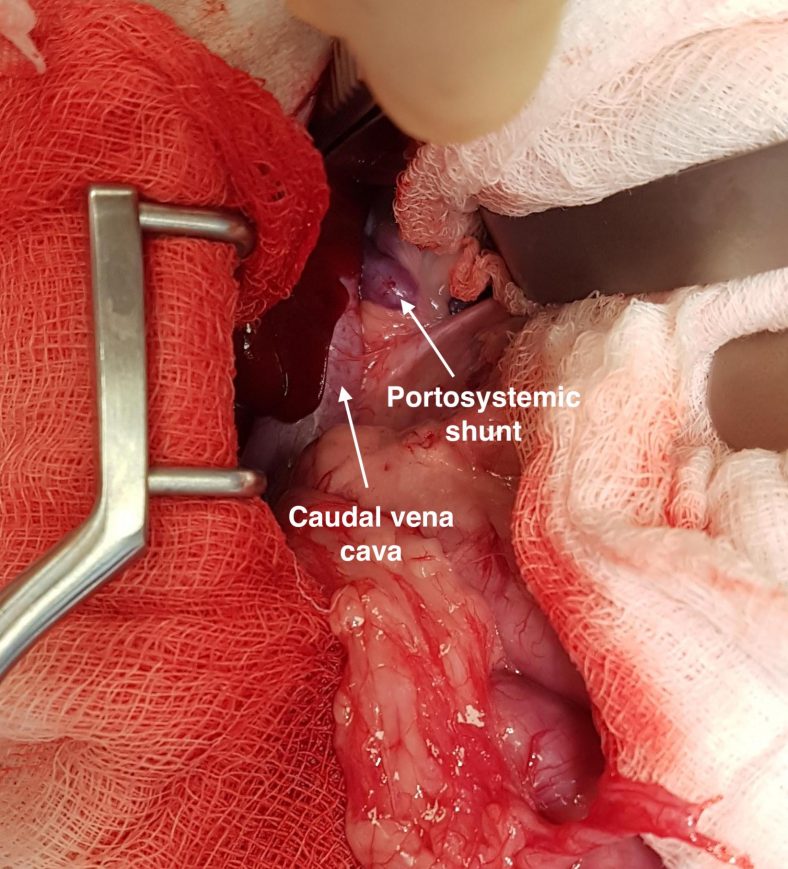
Identification of the anomalous blood vessel during surgery
Frosty bounced back well from surgery and enjoyed a lot of fuss from Team Ralph during his time with us. He was sent home the next day to continue his recovery with his family.
During a recent post-operative check-up, we were delighted to see Frosty was his usual self. He had recovered well from his surgery, with the surgical wounds healing nicely. Frosty will come back for an ultrasound and some blood tests in a couple of months to check the success of the surgery. The long term outlook for Frosty is good and we foresee him making a full recovery.
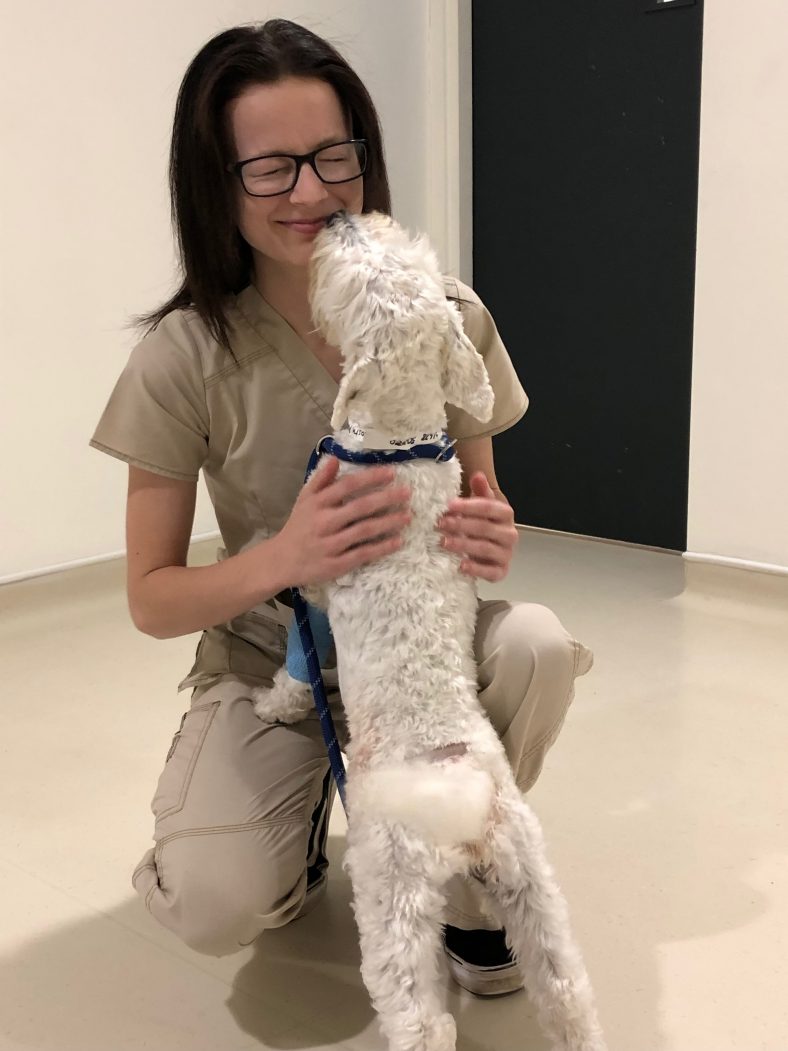
A kiss and a cuddle with Frosty
Thank you for taking the time to read about Frosty’s story. If you would like to find out more about our Soft Tissue Surgery, Anaesthesia + Analgesia, Emergency + Critical Care, and Diagnostic Imaging Services please click on the links.
Stay tuned for more tales from Team Ralph!
Take care,
Team Ralph
